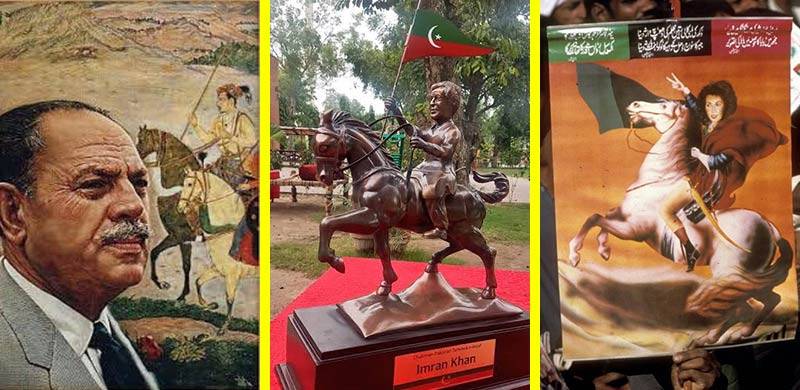
In 2018, I happened to come across a rather intriguing poster. While driving back from work in the evening I saw it wrapped around an electricity pole. It had a Photoshopped image of Prime Minister Imran Khan in a sherwani and a Jinnah cap. He was mounted on the back of a white horse. His left hand held the reins and his right hand stretched forward as if he was telling people (or the horse) where he was going. Over him flew a rather angry-looking eagle.
There was nothing unique about this image. The image was not in any way unique. It in fact is a continuation of a tradition introduced by ‘Field Marshal’ Ayub Khan. I have, in my collection, two posters that were printed sometime in the early/mid-1960s during the height of the Ayub Khan regime. One shows a profile of his face in front of a painting of the great Mughal Emperor Akbar. According to Lawrence Ziring’s 1971 book The Ayub Khan Era: Politics in Pakistan 1958-69, Ayub was a great admirer of men such as Turkish nationalist leader Kamal Ataturk, the iconic French leader Charles de Gaulle, and the Mughal Emperor Akbar.
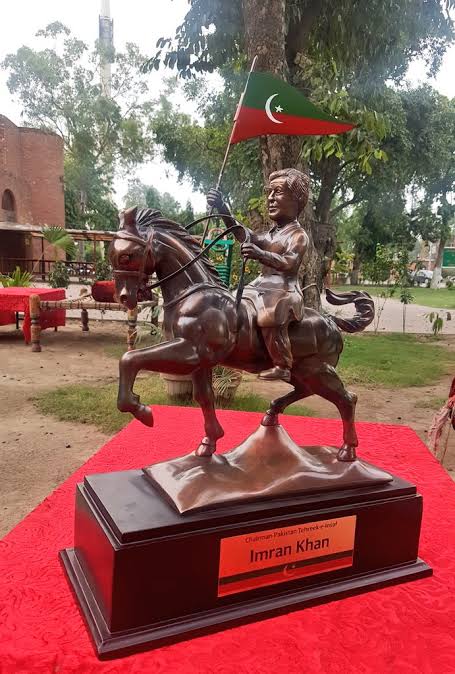
Ayub often explained himself as a ‘modernist’ Muslim. So probably he used the mentioned poster to subtly equate his ideological disposition with that of Akbar’s, who, according to Dr Mubarak Ali’s 1996 tome Ulema, Sufis & Intellectuals, was one of the most “open-minded” Muslim rulers of India.
The other Ayub Khan poster shows the field marshal on a white horse. He is wearing a three-piece suit and a Jinnah cap. The text in Urdu describes him as a soldier of progress and a man of vision.
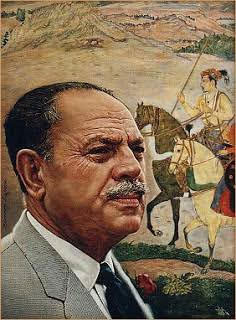
Also in my collection is a similar poster of ZA Bhutto. This one was printed during the 1970 elections. It shows Bhutto in a three-piece suit and Jinnah cap, riding a white horse. He is pointing towards the sky. The text in Urdu describes him as a soldier of Islam — a kind of Saladin of socialism.
In the early 1980s, the intransigent Ziaul Haq’s dictatorship (1977-88) published posters of Gen Zia riding a white horse in his military attire and charging towards a Soviet tank, almost like the eccentric Don Quixote charging towards a windmill in Cervantes’ famous 17th-century novel. Unfortunately, I have misplaced this poster. It described Zia as a champion of the Muslim Ummah and the scourge of the Soviet Union.
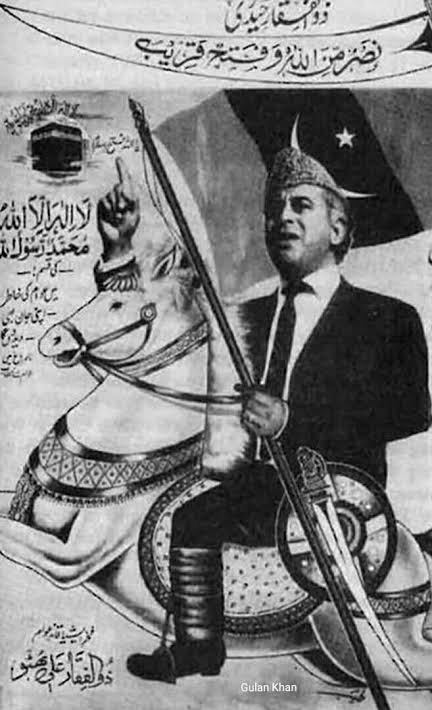
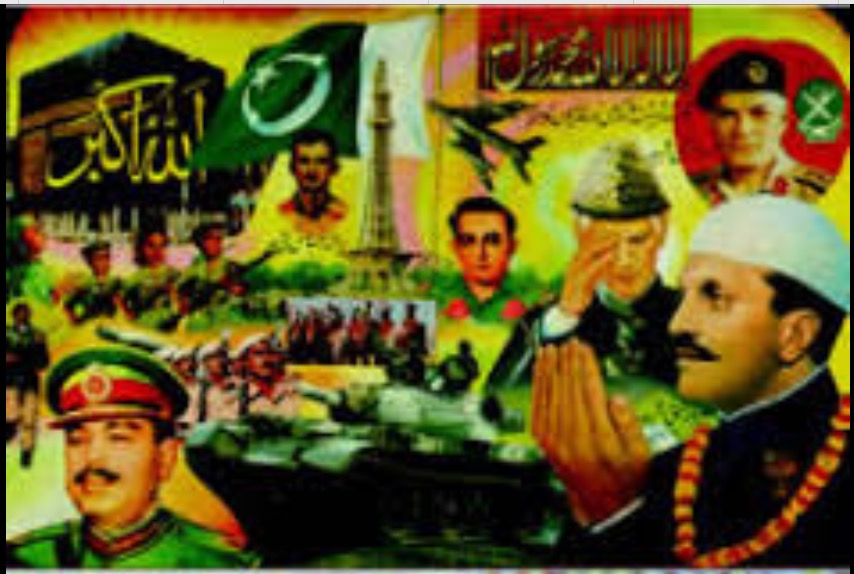
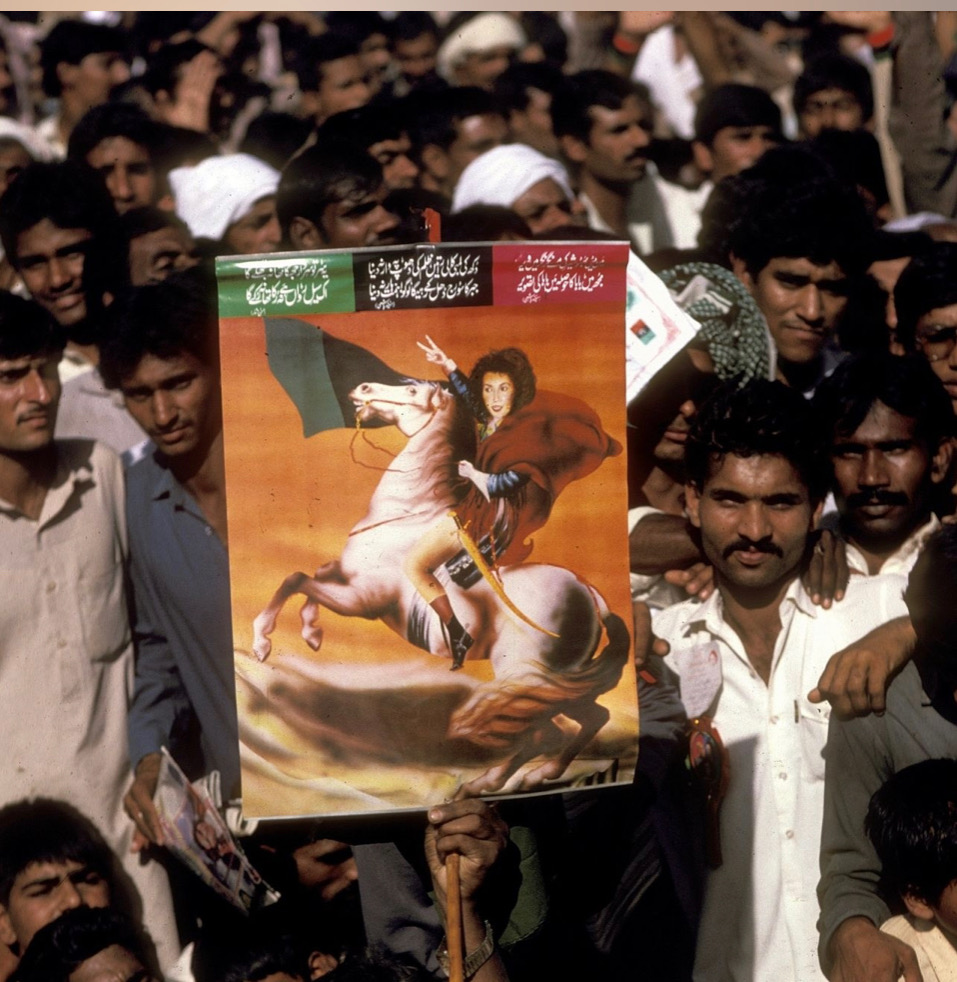
In 2003, posters showing Gen Musharraf riding a galloping white horse and flanked by two fighter jets, appeared. I can’t recall what the text on these posters said.
So where do all these images of Pakistani leaders on white horses keep coming from? The roots of this tradition largely lie in a sociopolitical phenomenon that emerged in South Asia before Pakistan’s creation in 1947.
According to Markus Daechsel’s study of South Asia’s middle-class milieu, Politics of Self Expression, various Muslim and Hindu activists and thinkers — in the period between the world wars — were smitten by the idea of the Übermensch developed by the controversial 19th-century German philosopher, Friedrich Nietzsche.
The concept of the Übermensch is complex. It is about an imagined man who, after transcending and even rejecting the morality of religion and the prevailing value systems, becomes an ‘overman’ (the Übermensch). Nietzsche believed that religious morality and accepted human values limit the scope of human creativity and intellectuality.
However, during the rise of radical German nationalism in the early 20th century, the idea of the Übermensch was adopted by racist German nationalists who described the Germans as a biologically and intellectually superior race which was not (or shouldn’t be) circumscribed by the notions of conventional morality and universal human values.
This was a clear distortion because Nietzsche’s concept of the Übermensch was not at all racist. German nationalists altered Nietzsche’s ideas to make the Übermensch a biologically superior race of Germans inspired and led by a pure-blooded ‘Aryan’ who was uninhibited by conventional morality and values. Adolf Hitler became such a man, the ultimate Übermensch.
Daechsel writes that radical Hindu nationalists, such as Vinayak Savarkar, and Muslim activists, such as Inayatullah Mashriqi, Ibrahim Chishti and Abdus Sattar Niazi, lapped up the Nazis’ understanding of the Übermensch.
Thus, Savarkar rejected the pacifism of Mahatma Gandhi and idealised the Hindu nation and individual as having strong physical qualities inspired by a ‘history’ of Hindu conquest, and unhindered by rituals which neutralised the Hindu nation’s ‘inherent’ masculine qualities. One such Hindu that Savarkar admired was the 18th-century Maratha Emperor Baji Rao. There’s a statue of Baji Rao riding a horse with a spear in his hand in Pune.
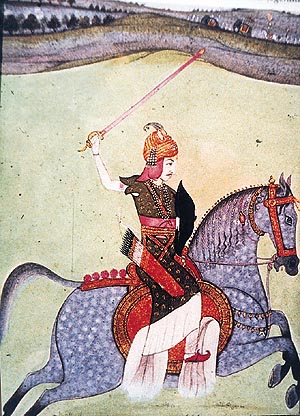
Mashriqi, who entered politics in the 1930s by forming the quasi-fascist Khaksar Tehreek, rejected the ‘Islamic modernism’ of the likes of Sir Syed Ahmad Khan and Muhammad Allama Iqbal. JM Baljon, in his 1961 book Modern Muslim Interpretations, wrote that Mashriqi visited Berlin in 1930 and met Hitler. Baljon quotes Mashriqi as saying that Hitler’s Nazi movement inspired Mashriqi to form the Khaksar Tehreek.
According to Daechsel, Mashriqi claimed that Muslim men of action were required who were undeterred by wasteful intellectual and spiritual pursuits. In a pamphlet he wrote, “(Muslims need) a true believer who is willing to sever all ties to society at large and is ready to become a soldier.” Such a man became Mashriqi’s Übermensch.
Not surprisingly, it was during this period that photographs of Mashriqi gallantly riding a horse emerged. In the late 1930s, young Islamic scholars Abdus Sattar and Ibrahim Chishti published a pamphlet called “Scheme”. In it they put forward the idea of a “Khuda Mard.” This Übermensch was to appear after the Muslims would ‘cleanse’ themselves from within and ‘renew their mission of world domination.’ The Khuda Mard had no issues in calling people of other faiths, “worse than animals.” Sattar and Chishti issued maps, flags and an image of the Khuda Mard mounted on a white horse and standing on top of a globe.
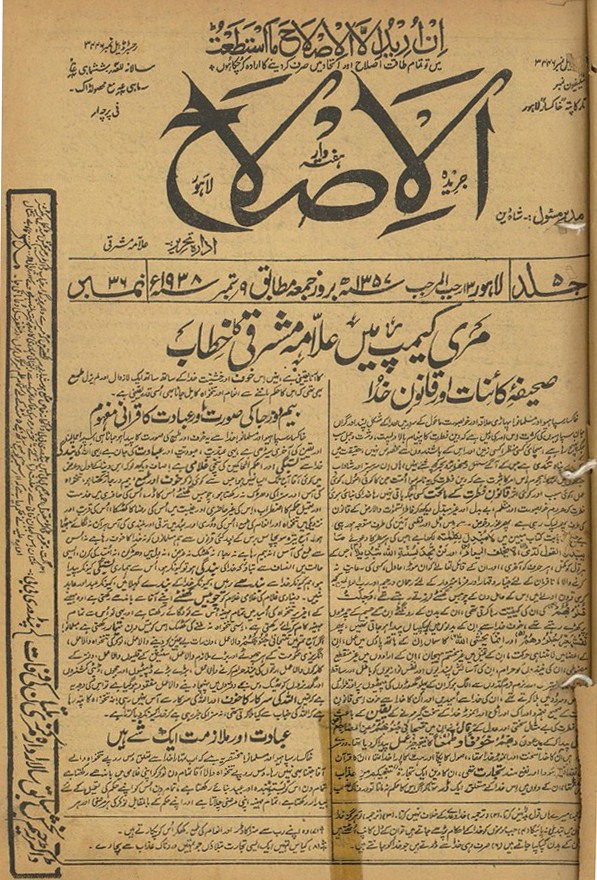
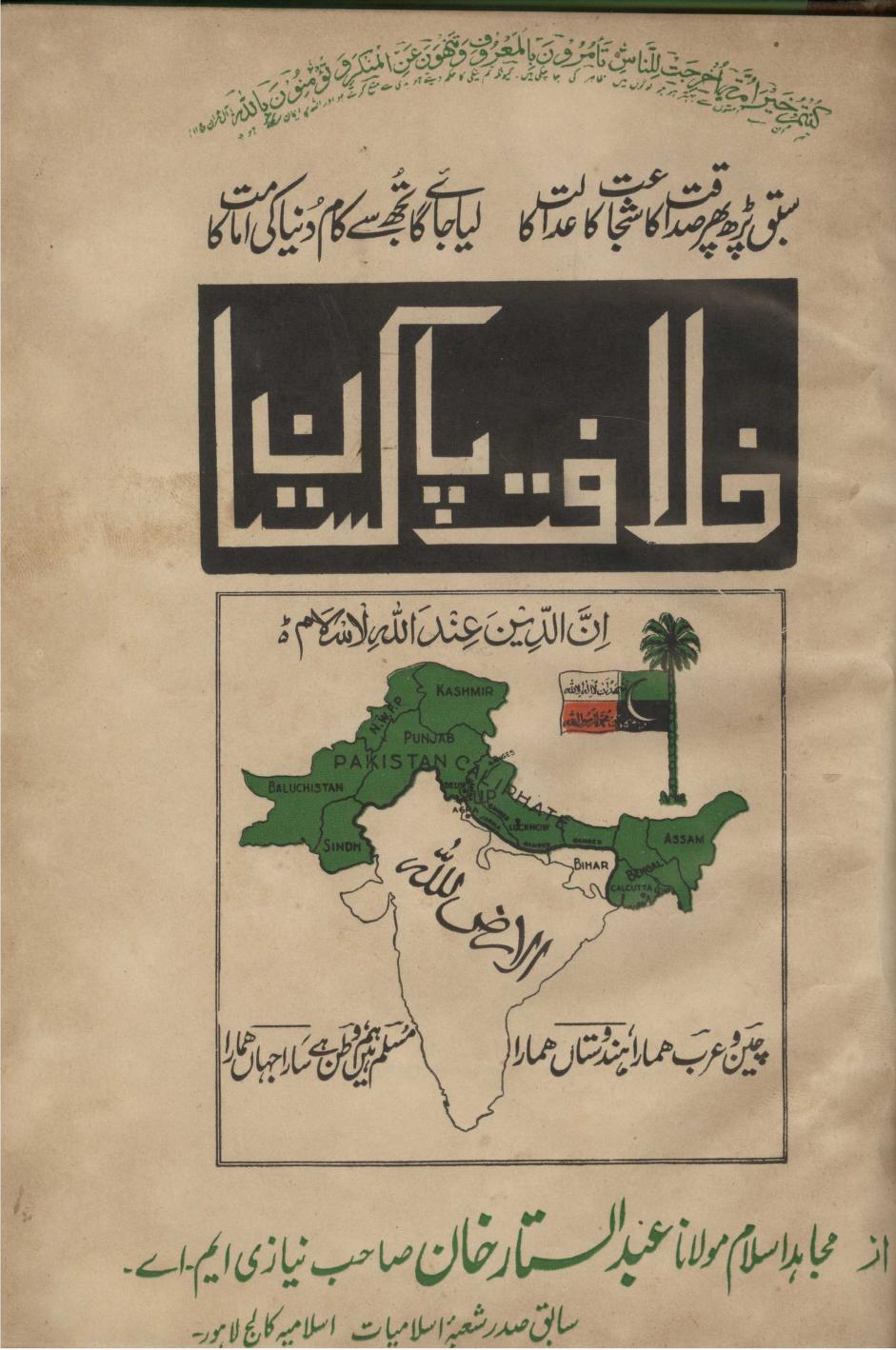
Perhaps the only Muslim thinker who managed to comprehend Nietzsche’s philosophy outside the Nazi perceptions of the same, was poet and philosopher Iqbal. Bilquees Dar in her essay “Perfect Man vs Superman”, in the August 2013 issue of Journal of English & Literature, writes that Iqbal was critical of Nietzsche’s atheism, but appreciated his insight. Iqbal wrote: “Nietzsche’s mind was of a disbeliever, but his heart is a believer.”
The idea of the Übermensch clearly inspired Iqbal’s idea of the qalandar (and later, the shaheen/eagle); i.e. a Muslim man who was a staunch individualist who then achieves a state of ‘khudi’ after getting rid of the cobwebs of religious obscurantism and intellectual lethargy to form a robust community of Muslims driven by a refreshed, dynamic and progressive Islam. Iqbal’s shaheen appears in various places in Pakistan. And it was last seen hovering over PM Khan in the afore-mentioned poster.

There was nothing unique about this image. The image was not in any way unique. It in fact is a continuation of a tradition introduced by ‘Field Marshal’ Ayub Khan. I have, in my collection, two posters that were printed sometime in the early/mid-1960s during the height of the Ayub Khan regime. One shows a profile of his face in front of a painting of the great Mughal Emperor Akbar. According to Lawrence Ziring’s 1971 book The Ayub Khan Era: Politics in Pakistan 1958-69, Ayub was a great admirer of men such as Turkish nationalist leader Kamal Ataturk, the iconic French leader Charles de Gaulle, and the Mughal Emperor Akbar.

Ayub often explained himself as a ‘modernist’ Muslim. So probably he used the mentioned poster to subtly equate his ideological disposition with that of Akbar’s, who, according to Dr Mubarak Ali’s 1996 tome Ulema, Sufis & Intellectuals, was one of the most “open-minded” Muslim rulers of India.
The other Ayub Khan poster shows the field marshal on a white horse. He is wearing a three-piece suit and a Jinnah cap. The text in Urdu describes him as a soldier of progress and a man of vision.

Also in my collection is a similar poster of ZA Bhutto. This one was printed during the 1970 elections. It shows Bhutto in a three-piece suit and Jinnah cap, riding a white horse. He is pointing towards the sky. The text in Urdu describes him as a soldier of Islam — a kind of Saladin of socialism.
In the early 1980s, the intransigent Ziaul Haq’s dictatorship (1977-88) published posters of Gen Zia riding a white horse in his military attire and charging towards a Soviet tank, almost like the eccentric Don Quixote charging towards a windmill in Cervantes’ famous 17th-century novel. Unfortunately, I have misplaced this poster. It described Zia as a champion of the Muslim Ummah and the scourge of the Soviet Union.



In 2003, posters showing Gen Musharraf riding a galloping white horse and flanked by two fighter jets, appeared. I can’t recall what the text on these posters said.
So where do all these images of Pakistani leaders on white horses keep coming from? The roots of this tradition largely lie in a sociopolitical phenomenon that emerged in South Asia before Pakistan’s creation in 1947.
According to Markus Daechsel’s study of South Asia’s middle-class milieu, Politics of Self Expression, various Muslim and Hindu activists and thinkers — in the period between the world wars — were smitten by the idea of the Übermensch developed by the controversial 19th-century German philosopher, Friedrich Nietzsche.
The concept of the Übermensch is complex. It is about an imagined man who, after transcending and even rejecting the morality of religion and the prevailing value systems, becomes an ‘overman’ (the Übermensch). Nietzsche believed that religious morality and accepted human values limit the scope of human creativity and intellectuality.
However, during the rise of radical German nationalism in the early 20th century, the idea of the Übermensch was adopted by racist German nationalists who described the Germans as a biologically and intellectually superior race which was not (or shouldn’t be) circumscribed by the notions of conventional morality and universal human values.
This was a clear distortion because Nietzsche’s concept of the Übermensch was not at all racist. German nationalists altered Nietzsche’s ideas to make the Übermensch a biologically superior race of Germans inspired and led by a pure-blooded ‘Aryan’ who was uninhibited by conventional morality and values. Adolf Hitler became such a man, the ultimate Übermensch.
Daechsel writes that radical Hindu nationalists, such as Vinayak Savarkar, and Muslim activists, such as Inayatullah Mashriqi, Ibrahim Chishti and Abdus Sattar Niazi, lapped up the Nazis’ understanding of the Übermensch.
Thus, Savarkar rejected the pacifism of Mahatma Gandhi and idealised the Hindu nation and individual as having strong physical qualities inspired by a ‘history’ of Hindu conquest, and unhindered by rituals which neutralised the Hindu nation’s ‘inherent’ masculine qualities. One such Hindu that Savarkar admired was the 18th-century Maratha Emperor Baji Rao. There’s a statue of Baji Rao riding a horse with a spear in his hand in Pune.

Mashriqi, who entered politics in the 1930s by forming the quasi-fascist Khaksar Tehreek, rejected the ‘Islamic modernism’ of the likes of Sir Syed Ahmad Khan and Muhammad Allama Iqbal. JM Baljon, in his 1961 book Modern Muslim Interpretations, wrote that Mashriqi visited Berlin in 1930 and met Hitler. Baljon quotes Mashriqi as saying that Hitler’s Nazi movement inspired Mashriqi to form the Khaksar Tehreek.
According to Daechsel, Mashriqi claimed that Muslim men of action were required who were undeterred by wasteful intellectual and spiritual pursuits. In a pamphlet he wrote, “(Muslims need) a true believer who is willing to sever all ties to society at large and is ready to become a soldier.” Such a man became Mashriqi’s Übermensch.
Not surprisingly, it was during this period that photographs of Mashriqi gallantly riding a horse emerged. In the late 1930s, young Islamic scholars Abdus Sattar and Ibrahim Chishti published a pamphlet called “Scheme”. In it they put forward the idea of a “Khuda Mard.” This Übermensch was to appear after the Muslims would ‘cleanse’ themselves from within and ‘renew their mission of world domination.’ The Khuda Mard had no issues in calling people of other faiths, “worse than animals.” Sattar and Chishti issued maps, flags and an image of the Khuda Mard mounted on a white horse and standing on top of a globe.


Perhaps the only Muslim thinker who managed to comprehend Nietzsche’s philosophy outside the Nazi perceptions of the same, was poet and philosopher Iqbal. Bilquees Dar in her essay “Perfect Man vs Superman”, in the August 2013 issue of Journal of English & Literature, writes that Iqbal was critical of Nietzsche’s atheism, but appreciated his insight. Iqbal wrote: “Nietzsche’s mind was of a disbeliever, but his heart is a believer.”
The idea of the Übermensch clearly inspired Iqbal’s idea of the qalandar (and later, the shaheen/eagle); i.e. a Muslim man who was a staunch individualist who then achieves a state of ‘khudi’ after getting rid of the cobwebs of religious obscurantism and intellectual lethargy to form a robust community of Muslims driven by a refreshed, dynamic and progressive Islam. Iqbal’s shaheen appears in various places in Pakistan. And it was last seen hovering over PM Khan in the afore-mentioned poster.

